Internet Philatelic Dealers Association Inc
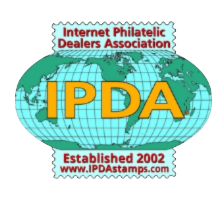
Stamp Quality and Condition
A guide to evaluating and appreciating Philatelic gems.
Stamp Quality and Condition
A guide to evaluating and appreciating Philatelic gems.
This is a topic that could consume a book let alone a few pages. So in the interests of brevity here are a few examples that perhaps give an insight into what to look for when you as a dealer are describing stamps for sale, or you as a collector are looking to buy stamps from an online market place.
This is not exhaustive but if after reading you want to write to ipdasecretary1@gmail.com with material you think should be added, we at the IPDA would be most pleased to hear from you.
Another caveat, different collectors buy for different reasons and quality can mean something different so again please accept that there can be different interpretations of quality with collectors looking for different things in the stamps they are looking to put in their collections.
The expression CC – Collector Challenges – has been coined. Coined from the watermark Crown CC!!
The following are some of the Collector Challenges that have been turned into quality and listing guidelines. Obviously, there is no one rule for all as there are different needs for different collectors.
6 basic Collector Challenges are a starting point – there are more but these are the 6 to be presented in this text.
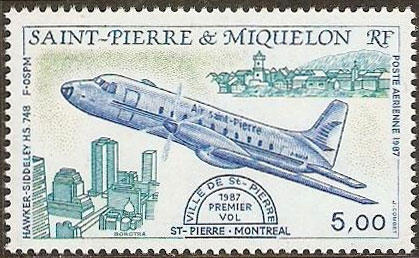
Credibilty Counts
This is discussed in more depth in another section but is include here for completeness and as a reminder. This can be interpreted in many ways but one most often thought of is the veracity of the words used in the listing description. You should look to see there are no words that are obviously or could be considered to embellish the details of the stamp for sale. In fact, you will find some market places make it quite clear it is a contravention of their selling guidelines to write such embellishments.
Colour Convinces
This is very important. Stamp issues for example say pre 1960 issues from some countries, often have different printings which resulted in different colour shades. These need to be accurately and correctly identified by the seller so the buyer can be confident of what exactly they are buying.
That is a given, but what is easily overlooked is the fact that sellers do not always scan with a level of accuracy. That is, to show a scan of the image which shows the exact colour of the stamp that is being sold. Not a brightened or enhanced colour to make the listing image present better to a buyer.
A Downey Head as an example. While the colour shade varieties can be very hard to discern for Downey Heads from just a just a scan there are obvious differences which the collector / buyer can easily see. And in seeing be warned off from buying, perhaps.
Here is an example in Fig 1 and Fig 2; SG 321, pale green from the 1911 Downey Head first issue.
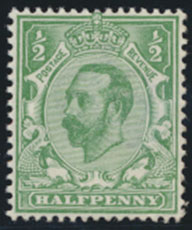
Fig 1 Normal colour with no scanning adjustment
SG 321 Pale Green
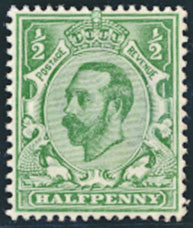
Fig 2 colour just a bit brightened
SG 321 Pale Green
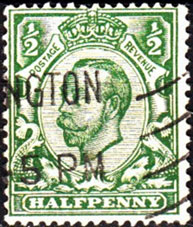
Fig 3 the 1912 issue
SG 339 colour brightened
There is no such shade
The Fig 2 copy might look aesthetically more pleasing – perhaps you will agree – but the stamp was never issued with this brightness. I might add scanning is at 600 dpi and I hope the reprinting comes out well enough to reflect the point I am trying to make. Fig 3, the 1912 issue and this stamp was never issued in this colour. Seriously brightened by the seller.
The point is, pay particular attention to the scanned image – is it what you would expect the actual stamp to look like?
Here is one more example. This is not a created example. It reflects a stamp listed for sale and the actual stamp received. Colour correctness is one quality factor.
Here is one more example. This is not a created example. It reflects a stamp listed for sale and the actual stamp received. Colour correctness is one quality factor.
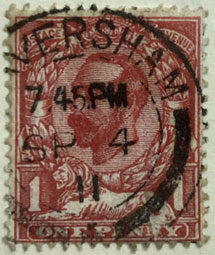
Fig 4
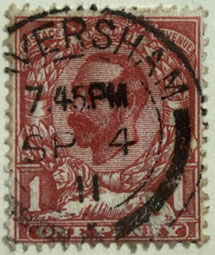
Fig 5
Fig 4 shows the stamp as listed for sale; Fig 5 shows the stamp that was actually received by the buyer
Creative Centering
Using the halfpenny green above let us look at centering. Many sellers make prominent claims about centering because this grading quality is “in many cases “perceived to be” very important to many collectors and can have a significant effect on selling price
Fig 1 is a well centered stamp. Look at Fig 6.

Fig 6

Fig 7

Fig 8
Fig 6 is quite clearly centered to the left. In this case it is not a very expensive stamp but were it expensive then the pricing between the two (Fig 1 and Fig 6) would most likely be very different.
Using a very different stamp, a 33p GB Machin, as in Fig 7 and Fig 8, the centering is obviously poorer and such copies are often not desirable in a collection. I mention this with an additional aside: this article presumes there is in fact an image of the stamp we are looking to buy. If there is no image, we do not know this condition. Just because a stamp is a more recent or modern issue does not guarantee the printing will always be well centered.
However, there is another aspect to Quality where centering is concerned. This concerns centering and pricing and grading certificates.
This maybe argued to be a valid approach on the part of the seller, or it may be argued to be a complete confidence trick. Each circumstance needs to be assessed.
Quality has it price one may say. But, can we put a price on integrity and honesty? Only a buyer can answer that.
Examples:
Which stamp is listed at $159.95 and which stamp is listed at 13c


It is quite obvious that one has had the colour brightened in the scanning process but what about the centering? What is the difference?
Is this something a collector needs to be looking out for and paying attention to when considering buying? It all depends on individual circumstances. Perhaps a spread of $20 to 13c is ok. Is $159.95 to 13c? and just for the record the 13c stamp had an image of the reverse. The more expensive listing did not!
Cuts and Creases
This is such an obvious area to look for. A good description of a stamp will fully describe the condition; perhaps a stamp is difficult to find or rather expensive in very good condition and as a spacefiller will be acceptable in a collection.
A good scan will show any damage, if the stamps are shown of course.
There may be exceptions but generally stamps should be shown as in Fig 11 and not as in Fig 12.


It is obvious why. In this case (Fig 11) we know the stamp condition (well at least the front of the stamps) because we can see them all in Fig 11 but mint stamps, as these are, overlaying each other can hide many quality aspects let alone be easily damaged with any moisture and especially for stamps from certain countries which have very “sticky” gums. Or, with mint hinged stamps, what would the reverse really look like?
Now, let’s look back and more carefully at Fig 8 and then the cutout image in Fig 13 – at the top right-hand corner. A very tiny crease, easily missed.

Fig 13
And what about the reverse of Mint stamps be they mint hinged, mint never hinged or even mint stamps issues with no gum. Fig 14 – In this case a Mint hinged stamp but is it good enough to just be described as mint hinged? especially if the reverse has not been shown. I would suggest not as there is toning showing on the reverse. The point is, pay attention to the scan and scans.

Fig 13
Catalogue Cost
I include this factor – and I use the word cost for alliteration of course – because so many sellers will often quote a catalogue price. This might be relevant to the listing, it might not. What maybe relevant are the following two important aspects.
The first is that a collector understands that the catalogue price is – as stated in all the catalogues I am aware of – a retail price for a stamp in, for example, very fine condition, or mint never hinged, or mint hinged – these quality conditions are usually very clearly stated in the catalogue.
The second is a listing, especially for used stamps, which describes the stamp and price for sale as, let’s say 50% off, when the opening listing price is 100% of catalogue, is more than likely to be misrepresentation.
It is far more common to see used stamps listed at 20% to say 40% of catalogue. Quite fair and correct, generally speaking, but to list that same stamp at 50% off catalogue is misrepresentation. There can be exceptions, as there always are of course.
A stamp could well have a retail price above catalogue and such high % discounts might be justified. Perhaps unlikely if the stamp is of such quality but perhaps it could happen. The point is the buyer should understand the pricing criteria.
One last point since I have mentioned catalogues. All good catalogues have a section or even sections on quality. These should be read because they put the quality considerations into context for the pricing of the stamps in the catalogues, as well as provide very useful advice and frequently with accompanying images to help the collector.
Summary Remarks
These topics, and many others, given the increasing use of the internet and online philatelic marketplaces, deserve more discussion if only because there are so many circumstances that could be considered. The point of this article was not to be exhaustive but to open the topic for consideration and thought. I hope I have done that.
The majority of this material was first published in the January 2021 issue of the Philatelic Exporter. It has been edited and republished here with the permission of the author, IPDA Member Michael Dodd.